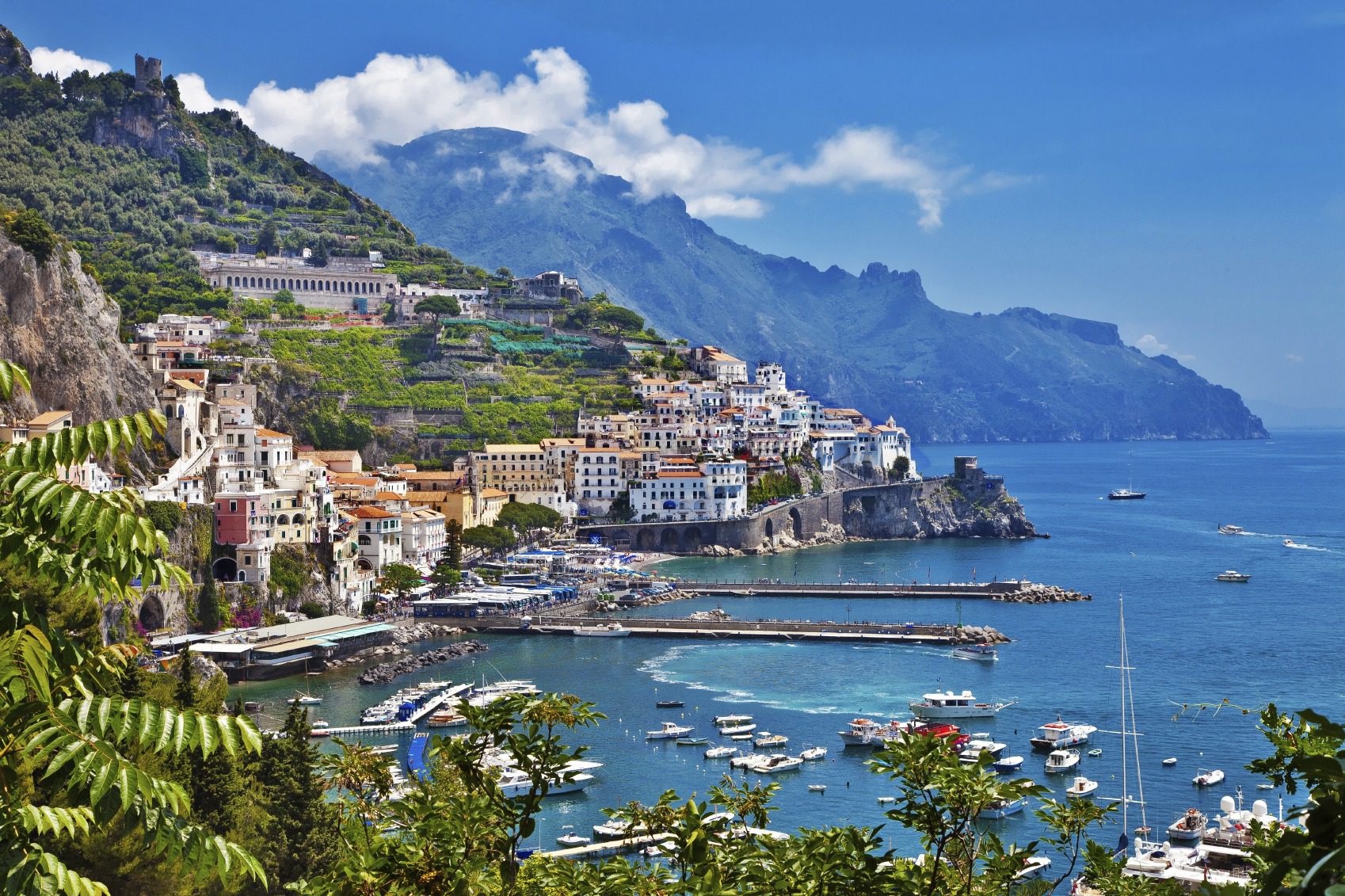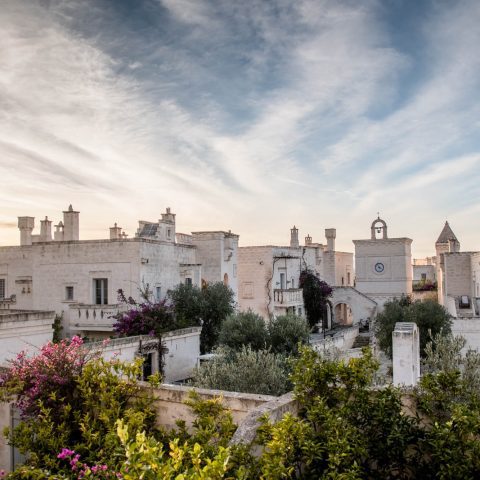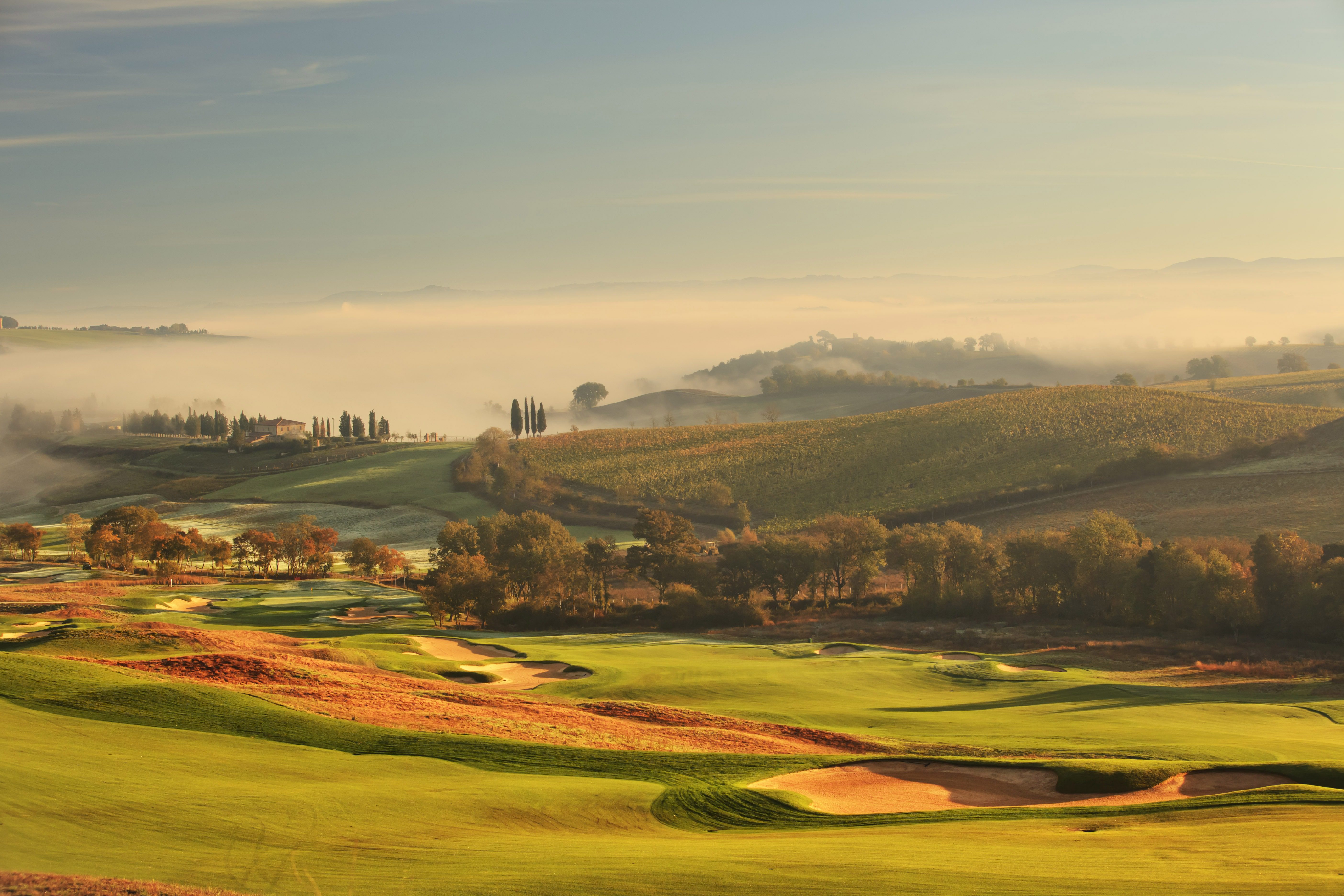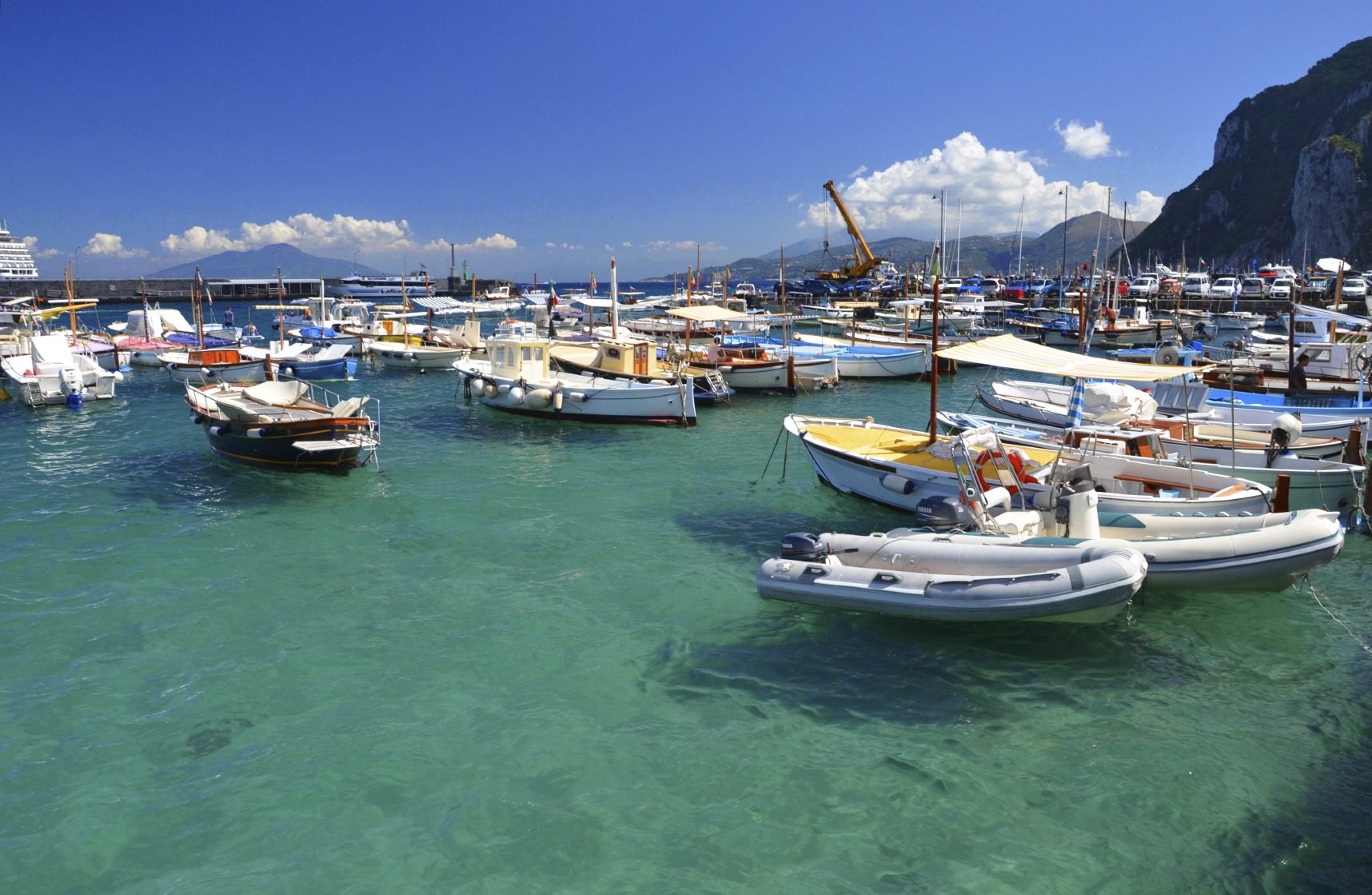
The Amalfi Coast stretches along the southern coastline of the Sorrento Peninsula and is known for its picturesque landscape. The expanse of vivid blue salt water, vertical climbing mountains, and a soft scent of lemon blossoms surround your senses. The region’s beauty has made this area a highly popular tourist destination and was declared by UNESCO as a World Heritage Site and an outstanding example of a Mediterranean landscape.
Some say the real Amalfi thrill is the scenic drive, and whether by bus or by car, the roads will leave you breathless. Just beyond the hairpin curves of the narrow, Italian road lies a sheer 500-foot drop into the sparkling Mediterranean Sea. Hotels and villas are cantilevered amongst the vertical terrain. Beautiful sandy coves peek out here and there far below.
A cave hides where the sea meets the water called the Grotta dello Smeraldo or the Emerald Grotto. Located in Conca dei Marini, the cave gets the name from its unique green lighting. The light filters through the seawater giving the water and cave a emerald hue. It’s recommended to visit in the afternoon for the best possible light and can only be reached by boat.
The Amalfi Coast is known for its lemon cultivation. Between February and October terraced gardens along the entire coast hold the fruit-laden citrus trees. These grapefruit-sized lemons with thick skins thrive in Italy’s sun-soaked climate. These thick-skinned lemons are perfect for the region’s limoncello liqueur, a famous after-dinner digestif. Sweeter than the traditional herbal digestifs, the best limoncellos are tart, sweet, very refreshing and best served cold.
About an hour’s drive by train or car lies the ancient Roman city of Pompeii. Pompeii is a wonder for historians. This remarkably well-preserved archaeological site attracts about 2.5 million people per year. A day trip to Pompeii with a guide or audio guide teaches much about the ancient way of life. Walk through the cobblestone roads and imagine how the Romans lived over 2000 years ago.
Volcano Mount Vesuvius erupted 2,000 years ago burying the entire city under 30 feet of mud and volcanic ash. The volcano preserved the once thriving commercial port creating a perfect study of ancient Roman life. Pompeii was lost for about 1,500 years until it was initially rediscovered in the late 1500’s when architect Domenico Fontana came across the ruins while digging a canal. However, exploration didn’t begin until 1748. Researchers believe that Pompeii held approximately 11,000 people. The city held a complex water system, an amphitheater, gymnasium and a port.So far, 44 of the 66 hectares have been excavated.
The Amalfi Coast and Pompeii gain millions of visitors for a reason; the beauty and archeological wonder are undeniably must-sees. Visitors and locals alike adore the mountains, sparkling sea, heart-stopping drives, delicious limoncello, and ancient ruins. Visit Evia’s concierge service to book a day trip to Pompeii while you enjoy Italy’s Amalfi Coast, www.eviactive.com/concierge-service.
0




